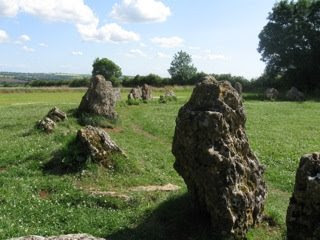


The Battle of Tewkesbury was re-enacted as part of the Tewkesbury Medieval Festival this past weekend with knights in full armour, gunners, with cannon and hand guns, archers, with the traditional English Longbow, men at arms with swords, spears and other weapons of the period, brought to life by approximately 2,000 volunteer warriors taking place on part of the site of the original battle of 1471.
When not fighting many of the volunteers live as soldiers on the march for the duration of the festival, sleeping in authentic medieval tents, eating food of the period, cooked over open fires in copies of medieval pots and pans, and preparing for the battle as they would have done in 1471.
The battle was between the houses of York, The White Rose, and Lancaster, The Red Rose and was the final battle of the Wars of the Roses. The battle came about because Henry VI was considered insane and the country was without a strong leader. Edward of York, the most able leader at that time, was declared King in 1461, resulting in Henry VI being locked in the tower of London. Henry VI's wife, Margaret of Anjou fled to France with their 8 year old son, also called Edward. When he reached the age of 18, Margaret of Anjou decided to return to England and re-claim the throne for her son. She landed at Weymouth on April 14, 1471, and set off for Wales, where Jasper Tudor awaited her with re-enforcements for her small army.
Margaret gathered supporters as she went, heading to Gloucester to cross the Severn River. When they arrived at Gloucester, they found the city was locked against them, by orders of King Edward. They headed for the next crossing point, Tewkesbury, but found that Edward's army was so close behind they had to stand and fight, rather than cross. Exhausted and outnumbered Margaret's army and the Lancastrian supporters were easily defeated. So many of them were slain trying to get to the river that the field they ran through is still known today as Bloody Meadow.
Margaret fled the scene with some of her ladies and was later found in a priory at Little Malvern. Her son, Prince Edward was killed either during the battle, or immediately afterwards, and is buried in Tewkesbury Abbey. The battle of Tewkesbury was a decisive encounter, ending the second phase of the Wars of the Roses. Edward IV's victory and the death of Henry VI’s son and heir, shortly followed by Henry’s own death and Queen Margaret’s imprisonment, destroyed hopes of a Lancastrian succession and led to fourteen years peace.


















































